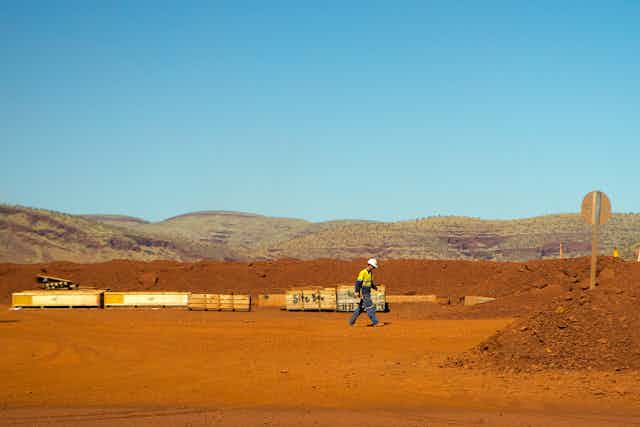The way the petroleum resource rent tax (PRRT) is set up means mining usually generates some revenue, on top of the corporate income tax, for the government over the life of projects. However, there are concerns the PRRT will not always generate additional tax revenue.
The idea of the PRRT is to take a share of the money generated from our natural resources on behalf of all Australian citizens. However, the way it is structured means companies do not always have to pay up, and when mining ventures fail shareholders bear all the costs of their losses.
This is because in particular years the amount that can be taxed will be negative due to a number of factors. For example, a large number of project expenditures, including exploration and mine development, come before the production stage that generates revenue. Also, revenue can be relatively low in some years because of the cyclical nature of world commodity prices. This all means that companies will make a loss in some years and won’t pay any PRRT for the use of government-owned resources.
If a project makes a loss then the company won’t pay any PRRT – but the government doesn’t pay any share of this loss either. Rather, a loss in any year is carried forward to be deducted against future PRRT sums. This means companies are forced to cover losses that have been carried forward to the next tax year. If a project ends with a net PRRT loss, then shareholders bear all of that loss.
Some of our mining projects will end with net losses. Unforeseen events such as low demand, price changes and technological improvements resulting in lower cost alternative ventures can lead to some unprofitable projects.
What’s really wrong with the PRRT?
Mining projects generate incomes, known as economic rents, which go over and above the costs required to convert natural resources into valuable oil and gas products. The idea of the PRRT is to take a fair share of this economic rent as government revenue.
At the moment, oil and gas projects are charged a 40% PRRT tax rate and a 30% corporate income tax. Corporate income includes rent income earned from natural resources, but also allows PRRT as a deduction. Unlike the corporate income tax, the PRRT expenses all investments in plant and equipment rather than just depreciation, and there is no deduction for debt interest.
All this means up to 58% of the economic rent earned by companies from our oil and gas projects could be collected as tax revenue. Few new gas projects at this stage are generating a positive PRRT.
Rather than the government paying a share of negative PRRT sums required for symmetrical treatment of gains and losses, the PRRT indexes any losses that have been carried forward to the next tax year. The index rate used is calculated as the long term bond rate plus 15% for exploration expenditure and 5% for other expenditures.
There are several reasons for low PRRT revenue. Current world oil and gas prices are relatively low. Also, investment costs for new Australian projects have been higher than expected, and Australian projects have much higher costs than other projects around the world, including in the Middle East.
Tax revenue also varies considerably from year to year. A mining project can extend over several decades. It consists of several stages, including exploration, investment, production and closure. Some years will be profitable and others will not.
Revenue less expenditures received over the life of the project, rather than revenue less expenditures calculated from year to year, represents the tax base for the ideal PRRT.
How should we reform?
Existing projects should stick to the current PRRT as it will be very difficult for them to transition to a new system while in operation. Transitioning midway through projects could also reduce the government’s net gains.
For new projects, the government should consider a model closer to the ideal PRRT discussed above. The ideal PRRT provides symmetrical treatment of positive and negative taxation measures. In this case, the government would pay out any negative PRRT.
A corporate equity (ACE) tax model could reduce the frequency and magnitude of negative PRRT in particular years. An ACE model uses the corporate income tax base plus a deduction for the normal rate of return of the company’s stock funds. The ACE tax base is a measure of the economic rent earned on natural resources, including oil and gas deposits, monopoly power and short term profits on new technology.
It is clear we are far from the ideal PRRT. There are legitimate alternative views about the specific 40% tax rate and about the indexation rates for carry-forward losses. These are primarily political questions which need to be addressed by government experts rather than a public inquiry.

